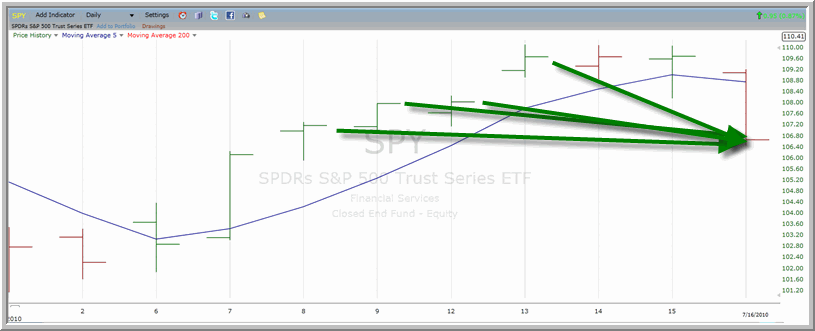High Probability ETF Trading: How to Sell ETFs Short (SPY)
If you are new to ETF trading, then the high probability approach to ETF trading may be just what you need to get started.
Why? Here are three factors about high probability ETF trading to consider.
1. High probability ETF trading is a quantified approach to trading exchange-traded funds (ETFs). Quantified trading strategies are based on statistical analysis and historical modeling, not guesswork or the latest “meme” in the financial media. Traders who use quantified trading strategies eliminate the guesswork and emotion from trading, relying instead on the data to drive clear-headed trading decisions.
2. High probability ETF trading is straightforward and easy to understand. Trading quantified, high probability ETF trading strategies is a simple procedure of scanning the market for specific opportunities, placing your orders the evening or morning before the market opens, and then waiting for your quantified, pre-established exit signal before locking in gains. No complicated formulas. No “but then if” second-guessing. Just 3-4 simple steps from entry to exit – and then on to the next trade.
3. High probability ETF trading is new. The principles outlined by Larry Connors and Cesar Alvarez in their book, High Probability ETF Trading, are similar to insights that Wall Street traders and professional money managers have pursued successfully for years. But these insights into how markets really work have rarely been available to retail traders. Particularly through the availability of High Probability ETF Trading Software – click here to learn more – the average retail trader now has at his or her fingertips the kind of quantified data and trade generating power that a few years ago only would have been available to professional traders.
Enough about high probability ETF trading. Let’s look at a high probability ETF trade.
The ^SPY^ is a great place to start when it comes to high probability ETF trading. The SPY tracks the S&P 500 Index and is one of the most widely-traded exchange-traded funds in the world.
The SPY is also among the oldest of the currently trading ETFs, which means that our database on this ETF extends as far back as the mid-1990s, when the SPY was launched.
Taking a look at the SPY over the past few weeks, we note that the fund has been trading below its 200-day moving average for most of the summer, high probability trading strategy calls for looking to sell short, rather than to buy.

In looking to sell short, high probability trading strategy calls for selling strength, rather than selling weakness. By selling bounces in bear markets (markets that are trading below their 200-day moving averages), high probability traders take advantage of powerful historical edges, in this instance, keeping the wind of the bear market at their backs.
Just such a bounce developed in the SPY in early July. Based on more than one of our high probability ETF trading strategies, the SPY became dramatically overbought below the 200-day moving average over the four days of July 8th, 9th, 12th and 13th.
High probability traders trading the SPY were scaling-in on the short side during this rally below the 200-day moving average. One high probability ETF trading strategy in specific, TPS 1-2-3-4 (Time Price Scale-In), had high probability traders scaling-in on the short side on precisely those four days – and increasing size as the SPY climbed higher (to learn more about the TPS method, click here).
Three days later, the SPY reversed dramatically to the downside, gapping down at the open and closing lower by more than 2% on the day.
This was the opportunity for high probability traders to cover the short in SPY, locking in gains in a trade that lasted about a week.
If you are looking to get started in ETF trading, then be sure to click here to pick up a copy of High Probability ETF Trading by Larry Connors and Cesar Alvarez. High Probability ETF Trading was named one of the best trading books of 2009 by SFO Magazine and includes 7 professional, quantified ETF trading strategies to help you find the best ETFs to trade every day.
David Penn is Editor in Chief at TradingMarkets.com.
